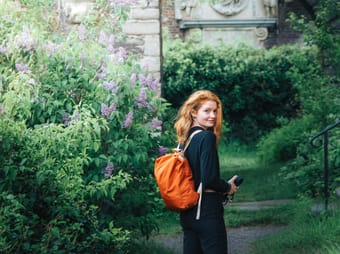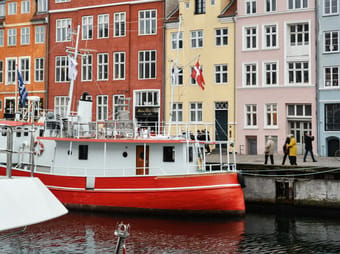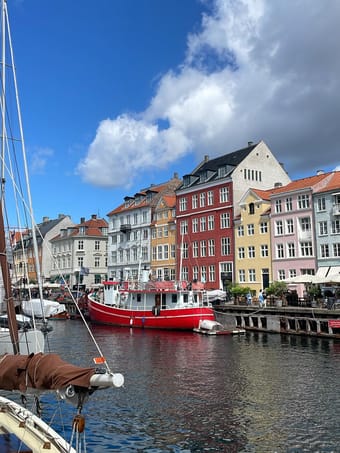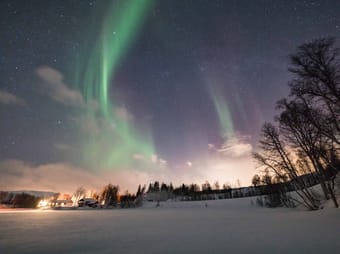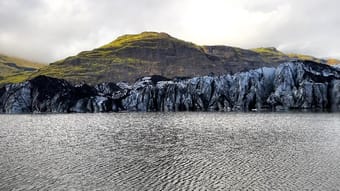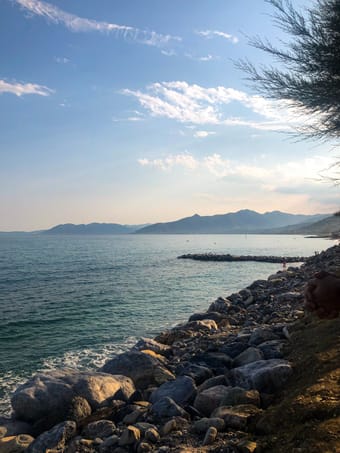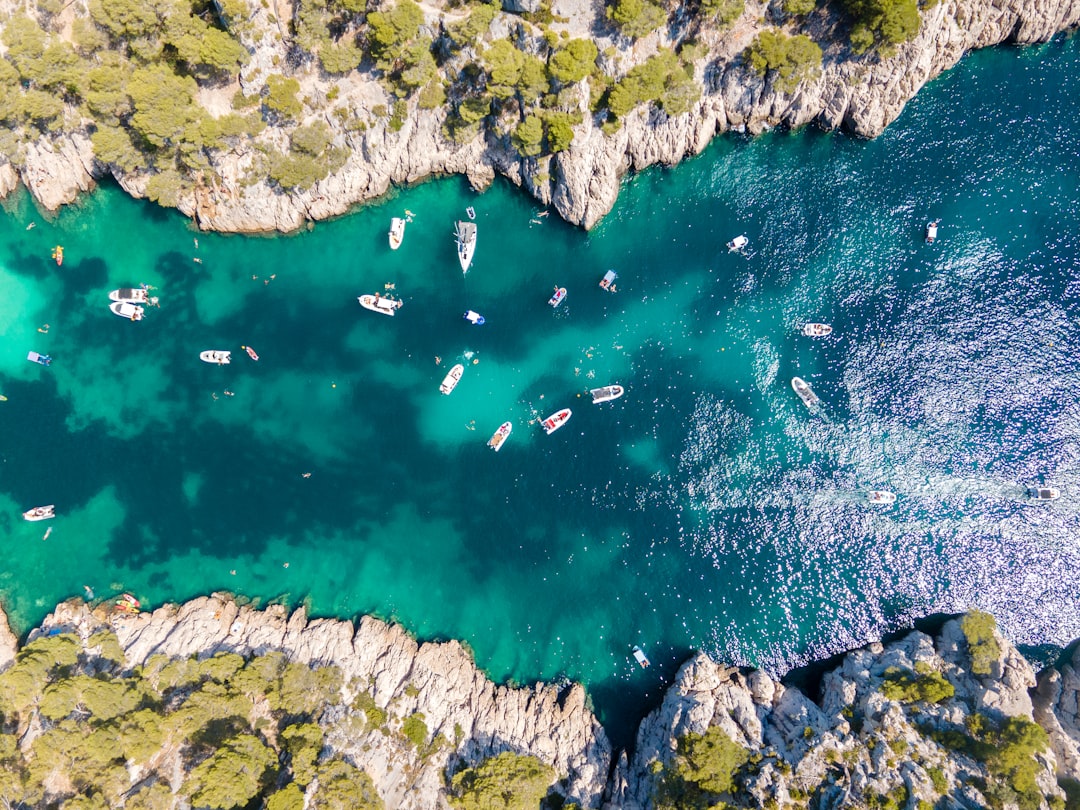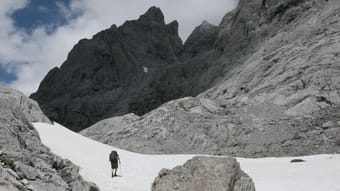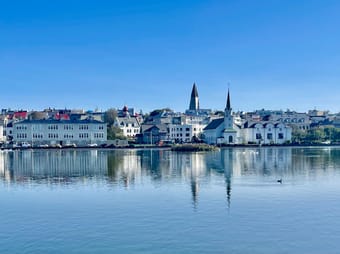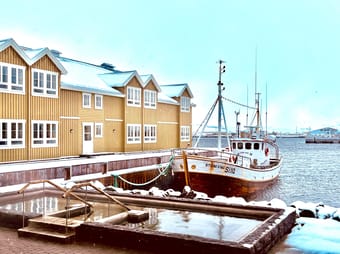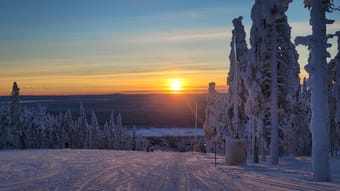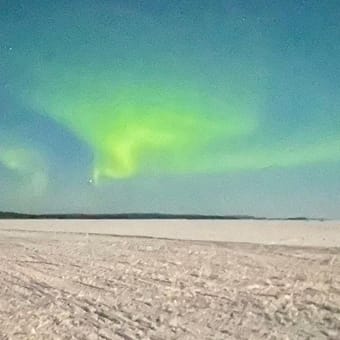Results for Northern Europe
Ghent (also spelled Gent or Gand) is a college town in East Flanders, Belgium. The city is centered around a medieval castle and is host to numerous gothic churches, beautiful canals and blooming side streets. Of all the places I have visited in Europe, this one is my favorite.
Take it as a day trip, a morning stop off or take several days to relax and explore this amazing city.
What's Included:
🏨 Recommended Stay Options
🍁 Sights
💒 Churches and Cathedrals
🚣 Unique Activities
📸 Photography Spots
🍬 Ghent Delicacy: Cuberdons
🥾 Transit Information
Not familiar with Ghent? It's reminiscent of Amsterdam but with a more storybook feel, complete with a castle.
Fun Fact: Did you know that Ghent was actually the second largest city in Northern Europe after Paris in the 11th century?
Adventure • Architecture • Art • History • Nature • People & Culture • Romantic • Photography
$10.00
1
Pedro Pereira
Available for hire
The perfect trip to Stockholm - a 2-3 day guide in the Swedish crown jewel
The capital of Sweden holds a magic feel everywhere you look, offering the charm of the Nordic region and the history of centuries of changes. This guide will help you navigate through the biggest city in Northern Europe, both for the attractions that should not be missed but also for the hidden gems scattered around Stockholm.
This guide includes:
- introductory note
- places to visit (museums and cultural venues, open squares, beaches and others)
- restaurants and coffeeshops
- photo spots
Get to see more from my travels on my Instagram (@pedralexpereira) and Flickr (flickr.com/photos/pedralexpereira)
Accessibility • Backpacker • Car-free • Couples • Digital Nomads • Family • Groups • LGBTQ+ • Female Solo • Vegan • Vegetarian • Architecture • Art • Boutique • Budget • Coffee • Design • Faith • Foodie • History • Outdoors • Overlanding • People & Culture • Photography • Relaxation • Romantic • Slow Travel • Wellness
$5.00
2
Copenhagen is one of the most beautiful cities in Northern Europe. Modern, historic, rich in colour, it is one of the most fascinating and liveable cities in the world. It is no coincidence that his name appears among the top places in numerous quality of life rankings. If you are planning a trip to the Danish capital and don't know where to start exploring everything in detail, keep reading!
Inside this guide you will find:
🗓️Best Time to visit
🚊Transportations
🏨 Where to stay (the best accommodation for your needs)
🏛️What to visit (all the monuments and attractions not to be missed)
☕️cafés
🍽️restaurants (for all types of pockets)
🍹cocktail bar and nightlife
🎭activities
✨unusual places
📌1,3 and 6 day itineraries
🎒excursions around Copenhagen.
And lots of other information and advice that will help you better plan your stay...
Happy reading!👀
50+ • Accessibility • Couples • Family • Groups • Adventure • Architecture • Art • Coffee • Foodie • History • Photography
$5.00
4
Your free & paid guides for Denmark, all in one place.
A little bit more about myself:
I'm French and spent most of my life between France and the UK. I have always loved travelling and started visiting European capital cities during Uni. In 2019 I did a bus trip to Central and Northern Europe only taking night buses for a week (Lyon - Prague - Copenhagen - Berlin - Munich - Lyon) and fell in love with Copenhagen. I came back to Copenhagen 3 years later in 2022 to get married with my now husband so Copenhagen holds a very special place in our hearts.
Through these guides, I want to encourage you to explore Denmark's hidden gems & most beautiful locations.
TIP: If you wish to get a sense of where these locations are relative to Copenhagen, make sure to use the map feature!
I hope these guides will be useful and inspire you to explore more of the country.
COMING SOON:
➕Day Trips from Copenhagen
➕Getting Married in Copenhagen for foreigners
NB: This is not a PDF but an interactive guide which means that when you click on a place in the guide or map you can directly open directions on your phone's Google Maps app, call restaurants or book hotels.
Don't forget to download the free Thatch app to get easier access!
Tag us on Instagram (@Tootly.travels)
Backpacker • Car-free • Couples • Digital Nomads • Family • Groups • Female Solo • Accessibility • 50+ • Architecture • Boutique • Budget • Coffee • Design • History • Luxury • People & Culture • Photography • Road Trip • Slow Travel
Free
9
Emma | Where's Emma Now
Available for hire
🇳🇴 Everything You Wanted to Know About Seeing the Northern Lights: Tromso, Norway
If you want to see the northern lights in Europe, Tromso is your best bet! It's known for being in the middle of the region where you're most likely to see northern lights anywhere in the world.
This guide has everything you need to plan an amazing Aurora Borealis trip: a city guide to Tromso, my favorite lights chase options, the best guided experiences, logistics to plan your trip, and more!
The most important difference with this guide is an in-depth explanation of how northern lights excursions work. What to expect of the lights, the excursions, and how to best plan and prepare!
In this guide, you'll get:
- my favorite northern lights chase companies
- detail explanation of what to bring, expect, and how to prep for northern lights chases
- 4 daytime excursions
- 8 things to do in Tromso
- 9 restaurants at varying price points
- 3 cafes
- 6 hotels
Groups • Female Solo • Couples • Digital Nomads • Adventure • Foodie • Outdoors
$20.00
1
Iceland is a Nordic island country located in the North Atlantic Ocean, and it is known for its stunning natural beauty, unique landscapes, and vibrant culture.
The land of fire and ice, of imposing volcanoes, of the largest glacier in Europe, of the magical northern lights, of waterfalls that leave you speechless, of hot springs, of whales, of puffins...
50+ • Backpacker • Couples • Digital Nomads • Family • Groups • LGBTQ+ • Pets • Female Solo • Adventure • Outdoors • Photography • Road Trip • Van Life
Free
6
The most stunning nature of Sweden in a single guide, and, most of all, is made it CHEAP.
I have lived here for a year and had the best budget trips to the backcountry, witnessing northern lights and exploring the wildest nature in Europe.
The guide is significantly nature oriented as Sweden has some of the best landscapes of all Europe and it is one of the most beautiful and safest country to do backpacking.
It focuses on the central and northern regions as they are the most diverse, filled with mountains and off grid adventures.
------------------------------------------------------------------------------------------------
The guide is structured as follows:
- A google maps plugin included!!!
- Introduction
- 10 National Parks
- 10 Natural Wonders
- 10 Backpacking itineraries
- 100+ Huts & Cabins
- 25 Transport Hubs
- 20 Food Supply Stores
- 17 Strategic Parking locations
- 12 Cities and Villages to stop by
Backpacker • Family • Groups • Adventure • Camping • Outdoors • Sustainable/Eco • Road Trip
$7.00
1
Italy, and Europe as a whole, has an incredible rail network meaning you can travel to any main location via the train without too much stress. This is a quick and easy guide to using the trains to get from one coast to the other in Northern Italy, passing Milan, Lake Como, Lake Garda and many more.
Backpacker • Car-free • Couples • Digital Nomads • Female Solo • Adventure • Art • Architecture • Budget • History • Outdoors • Road Trip • People & Culture • Wine
Free
4
As an Aurora & Arctic enthusiast, after 2 years in Norway, let me help you catch Northern Lights & top experiences during your Arctic Adventure.
This guide includes:
🗺 the Arctic's top destination
🌌 Aurora hunting tips
✈️ 20+ top Arctic experiences
💯 trustworthy Arctic tours
💰 Discount offers
Save this guide for later!
Free
6
My family of 4 took a 15 day road trip circling from Switzerland, through Liechtenstein, Austria, Germany, Slovenia, and into northern Italy as part of a longer 50 day planes, trains, and automobiles trip around Europe.
Family • Vegetarian • LGBTQ+ • 50+ • Budget • Foodie • Road Trip • Coffee • Architecture • Outdoors
Free
1
Greece, my favorite European country! The Greek mainland is by far my favorite part of Greece. It is less crowded and a lot cheaper than the famous islands. You can still find many authentic villages and incredible beaches. You can find the most relevant archeological sites here and breathtaking monasteries. It is the best region to go hiking and explore the many waterfalls. We always rent a car and go on a road trip through the vineyards and olive and peach trees. Here’s my Northern Greece Travel Guide including what you can’t miss when you go there and where to eat and stay.
Road Trip • Adventure • Nature • History • People & Culture • Beach • Mountain • Van Life • Foodie • Budget
$15.00
2
Marseille is a major port town on France's southwestern coast. It's a unique French city that has a vibe all of its own… You might not really feel like you’re in France!
Marseille has been heavily influenced by immigration from Northern Africa & Italy, resulting in a rich and colorful diversity.
Vibrant street art, lots of interesting food, and a little bit of a gritty feel will be the backdrop to your stay here.
Marseille is frequently used by visitors as a home base to hike, enjoy the water, and explore the surrounding towns and natural areas.
I have visited Marseille three times and love this city!
This guide includes:
6 general recommendations, including advice on where to stay and things to eat
6 things to do
5 restaurants
4 pizza places
4+ laptop-friendly cafes
3+ bars
4 day trips
3 Calanques recommendations
4-day relaxed itinerary
2-day compact itinerary
You also get:
✍️ My personal notes for each recommendation
📍 An interactive map of all recommendations
🔓 Access to all future updates
🎞️ Linked videos (where applicable) that bring recommendations and advice to life
💙I'd be so grateful if you shared this guide with a friend, left a review, or contributed a small tip. 🙏🏼
Nature • Slow Travel
$15.00
12
Reykjavík is the capital and largest city in Iceland. It’s also the northernmost capital in the world. The city, on the southwest coast of the island nation, is home to less than 150,000 people (that’s 60% of the total population). It’s by no means sleepy, though. It has a thriving art scene (music festivals, independent record stores, pop-up exhibits) and foodie spots (Michelin restaurants, organic wine bars, coffee culture). A grand church towers over the city. Candy-colored houses line the streets. Thermal swimming pools are gathering spots for most neighborhoods. Northern lights sightings are a real possibility (seasonally, of course). It’s also the jumping-off point for exciting adventures all around the Land of Fire and Ice. Pack for all seasons, as the weather changes frequently throughout the day--no matter what time of year it is. And be prepared to fall in love.
This detailed guide includes:
Places: islands, neighborhoods
Stay: hotels
Eat: bakeries, cafés, coffee shops, food carts & halls, ice cream, Michelin stars, restaurants
Drink: beer bars, breweries, cocktail bars, wine bars
Shop: beauty products, bookstores, chocolate shops, clothing boutiques, flea markets, outdoor wear, record stores, vintage clothing, wool products
Do: art museums, churches, concert venues, history museums, lakes, memorials, parks, peace stones, roads, sculptures, sports venues, squares, streets
Transportation: airports, bus terminals, car rentals, ferries
Note: I travel to Reykjavík quite frequently, so this guide is updated often.
Car-free • Art • Boutique • Foodie • People & Culture • Coffee • Design • Shopping • History
$30.00
3
Seven-day trek based in refugios.
INTRODUCTION
The Picos de Europa is a region of limestone peaks reaching over 2500 metres above sea level; the highest being Torre de Cerredo at 2650 metres. The route described here is one that I hiked alone in early summer. The best time to tackle the route is between June and September. There is more likely to be snow on the high passes in early June but they are usually not to difficult to negotiate.
The Picos de Europa is not as well known as the Pyrenees or Alps and as such the hiker traffic is less and the tourist infrastructure is less developed. This makes the area feel less spoilt but it can also make it a more challenging area to explore with fewer trails and little to no signposting. Always take a map with you: the Editorial Alpina 1:25,000 maps are the best. I took these and also used the outdooractive app and downloaded the relevant map tiles. This is useful for pinpointing where you are, in what can be confusing terrain. I was lucky to have clear weather for my entire trek but I would imagine that it's pretty difficult to navigate when the cloud is down on the mountains so take a compass too.
You can stay in refugios every night on this hike and wild camping is permitted above 1500m; details below.
I can't recommend the Picos de Europa as a hiking destination enough. The mountains are magnificent but there are also beautiful extensive woodlands at lower altitudes, as well as meadows full of wildflowers and butterflies. The juxtaposition between the stark limestone peaks and the gentle greenery of the valleys is beguiling.
DISCLAIMER: Please note that hiking in the Picos de Europa is not risk free. It is a very challenging area in which to hike. I accept no responsibility for any accidents you may experience while hiking this route. You are responsible for your own safety. Some of the dangers and difficulties are listed a little further down this guide.
HOW BUSY?
Unlike some of the more well know hikes around Europe this trail is less well trodden and as such the trail can be quite hard to follow at times, and at other times there is no trail! Despite this, refugios, being small, fill up fast (see below).
REFUGIOS
The hike is made easier if you stay in the staffed refugios where you can recharge your metaphorical batteries. Accommodation at these mountain huts is in communal dormitories and you will need to bring your own sleeping bag. It's best to book ahead as they are often full throughout the summer. Prices are around the €12-17 mark and they also do affordable meals (breakfast, picnic lunch and dinner).
There is also a handful of unstaffed, very basic mountain shelters with no services and no beds but these can be a good option in an emergency. Most of the refugios only accept cash so be sure to take plenty with you before you set off as there are no ATMs! All the refugios on the route are listed in the route description below with website links.
WILD CAMPING
Camping is only permitted at 1500m above sea level or higher. There is not much water anywhere above this altitude so be sure to fill up when you get the chance (at refugios) before camping in a remote spot.
POSADA DE VALDEON
This beautiful village tucked in the valley between the Macizo Central and Macizo Occidental is a lovely place to wander for a few hours. At the centre of the village there are a number of restaurants and bars and a small square with a water fountain. If you need somewhere to stay before or after the trek you'll find hotels, guest houses and a youth hostel. There is a hotel recommendation and link in the route description.
In the centre of the village is a pharmacy should you need any blister plasters! And on the road to the west of the village is the National Park office where you can find information about hiking and anything else to do with the national park.
GETTING THERE
From the UK there are Ryanair flights to Oviedo (Asturias airport) from London Stansted. A bit further afield you can get flights to Bilbao and Santander from the UK and the rest of Europe. Getting from the airport is a little complicated but there are buses to Posada de Valdeón from Oviedo changing in Cangas de Onis. The journey takes about 4.5hrs. There are also buses from Santander and Bilbao changing in Llanes and Riaño with the journey taking around 15hrs from Bilbao.
An easier but more expensive option is to get a taxi. You could also hire a car but of course you will have to leave the car sitting idle in Posada de Valdeón while you do the hike.
FLORA & FAUNA
This area of northern Spain is fantastic for wildlife. At lower elevations the beech and sessile oak woodland stretches for miles over rolling hills. This is part of the boreal forest that once would have covered much of Europe and is home to roe deer, wild boar, red squirrels, pine martens and brown bears.
In the skies you have a good chance of seeing griffon vultures, golden, booted and short-toed eagles, black kites and peregrines. Of the smaller passerine species the Picos are home to red-backed shrikes, black redstarts, spotted flycatchers and black woodpeckers.
But it's the wildflowers in the meadows and on the woodland edges that are the real joy and most easily appreciated. Vetches, cinquefoils and orchids create a colourful patchwork of colours with butterflies bringing the whole scene to life. Look out for swallowtails, fritillaries and hairstreaks.
NAVIGATION
Navigation is difficult as the terrain can be confusing and in many places there is no trail whatsoever. Take a map (1:25K Editiorial Alpina maps are the best), compass and GPS and know how to use them. It's also a good idea to download the map on a relevant map app. I used the outdooractive app but others are available.
WEATHER
Thunderstorms are common, usually in the afternoon and these can be particularly dangerous high up in the mountains. It's best to hike early and get to a refugio by lunchtime if there are afternoon thunderstorms in the forecast. The weather in this part of Spain is very changeable as it has a maritime climate. Rain and thick fog are possible but equally long periods of warm sunshine are not unusual. The best advice I can offer is to be prepared for anything. Pack suncream and a sunhat but don't forget your waterproofs either.
FALLING ROCKS
Rock falls are not unusual as chamois and other hikers can dislodge rocks above you. Getting caught in a rockfall is not so common but not impossible. Be aware and if you see rocks heading your way, and cannot find cover, crouch down on the floor and pull your rucksack over your head and back.
DRINKING WATER
There is very little running water as these mountains are mostly comprised of permeable limestone. You will need to take plenty of water with you each day (I packed three litres every day and usually drank it all). You can fill up at the refugios and there are a few fountains / fuentes although most of the ones I saw marked on the Editorial Alpina map were dry when I found them.
THE SUN
Sunburn and sunstroke are both real dangers and there is little shade. Keep hydrated and wear a sun hat that covers your neck.
TERRAIN
In some places you need to scramble up steep rocky sections. You will need to have experience in this kind of terrain and have a head for heights! The terrain is very rocky and uneven at higher altitudes so you will need strong, sturdy footwear. Trekking poles are also invaluable in providing support and helping you across and up awkward sections. There is also a lot of steep ascent and descent on this route so you will need to be reasonably fit.
DANGEROUS ANIMALS
On many parts of the trail you will encounter cows. In my experience they are very docile and used to trekkers so they shouldn't be of any concern. You may also find flocks of sheep and while these aren't dangerous they are often accompanied by shepherd dogs which have been trained to keep intruders away from the flock. They can be quite intimidating when they start barking at you. If you see sheep ahead it is best to give them a wide berth, even if this means veering away from the trail for a while. If you walk directly towards or through a flock of sheep you risk agitating the shepherd dogs.
Bears are not common in the Picos de Europa but there are bears in other parts of the Cantabrian Mountains, notably Somiedo National Park, not far to the west, and there is always the possibility of seeing an itinerant bear wandering through the Picos. Eurasian brown bears are not as big nor aggressive as the grizzly bears of North America so you shouldn't worry too much about an encounter. It's extremely unlikely you will see one so if you do, consider yourself very lucky.
Wild boar are common in the woodlands at lower altitudes. They are not as aggressive as some people will tell you and tend to be nocturnal. I did see some in the daytime near Vegabaño. As soon as they saw me they ran away, crashing through the undergrowth. As with any large animal it's best to simply give them plenty of space to move away from you.
I hope none of this advice puts you off hiking in the Picos de Europa. Yes, it's a challenging mountain area but the rewards for hiking here are great. Enjoy the hike!
Adventure • Nature • Slow Travel • Sustainable/Eco • Mountain • Camping
$12.00
3
Active volcanoes. Dancing northern lights. Gushing geysers. Massive glaciers. Thermal hot springs. Thundering waterfalls. Iceland is the ultimate adventure destination. How have you not been here yet? It’s finally time. Start in the northernmost capital in the world. Reykjavik is a hip, modern city. Then start exploring the wild coastline, the sheep-filled countryside, the icy interior, and the peaceful islands. There are plenty of black-sand beaches, small fishing villages, turf-roofed houses, and epic hikes along the way. Just remember to pack layers. Sometimes, the Gulf Stream provides moderate temperatures. Other times, it’ll feel like you’re in the Arctic. Also don’t forget the long, dark winters and the 24-hour daylight during the short summers. If you take advantage of Icelandair’s free stopover program—a great excuse to visit Helsinki, Copenhagen, and even Paris—you can keep returning to discover which season you like best.
This detailed guide includes:
Places: regions, cities, islands, peninsulas, towns, neighborhoods
Stay: hotels
Eat: bakeries, cafés, coffee shops, food carts & trucks, food halls, ice cream, Michelin stars, pizzerias, restaurants, soup
Drink: beer bars, breweries, cocktail bars, wine bars
Shop: beauty products, bookstores, Christmas stores, chocolate shops, clothing boutiques, flea markets, knitwear, outdoor wear, record stores, vintage clothing, wool products
Do: art museums, bays, beaches, bridges, caves, churches, concert venues, cultural centers, fjords, geothermal areas, geysers, harbors, hikes, history museums, horseback riding, hot springs, lagoons, lakes, lighthouses, memorials, mountains, national forests, national parks, natural wonders, nature reserves, parks, peace stones, ponds, roads, rock formations, rocks, rootless cones, scenic drives, sculptures, shipwrecks, sports venues, squares, streets, swimming pools, thermal baths, tunnels, valleys, viewpoints, volcanoes, walks, waterfalls
Transportation: airports, bus terminals, car rentals, ferries, parking lots, transfers
Note: I travel to Iceland frequently, so this guide is updated often.
Adventure • Art • Boutique • Foodie • History • Nature • Slow Travel • Road Trip • Beach • Coffee • Design • Outdoors • People & Culture • Wellness • Relaxation
$40.00
1
Are you considering Iceland as your next destination? Do you need a little extra motivation to actually book that flight? Though motivation comes in many forms, a great hotel can easily tip the scales. Here are 14 hotels around the country--from Reykjavík to a remote island to the far north--to help you envision your trip. You'll be ready to search for active volcanoes, gushing geysers, massive glaciers, the northern lights, thermal hot springs, and thundering waterfalls in no time.
Note: I travel to Iceland frequently, so this map will be updated.
Architecture • Budget • Design • Luxury • Boutique • Adventure • Road Trip • Sustainable/Eco • Relaxation
Free
1
Helsinki, a vibrant city on the rugged shores of the Baltic Sea, beckons you to explore its captivating charm. This Nordic gem boasts a fascinating fusion of history and modernity, where sleek design districts seamlessly blend with granite cathedrals and bustling marketplaces.
Embark on a journey through Helsinki's soul. We'll delve into the city's rich maritime heritage, where Suomenlinna's imposing sea fortress whispers tales of bygone eras. Stroll along the vibrant Esplanadi, a boulevard pulsing with life, and admire the architectural brilliance showcased in the National Museum. As twilight paints the sky, prepare to be mesmerized by the dazzling Northern Lights, a celestial spectacle that will leave you breathless.
This guide includes:
- introductory note
- places to visit (photo spots, museums and cultural venues, open squares and others)
- restaurants, coffeeshops and sweets spots
- photo spots
Get to see more from my travels on my Instagram (@pedralexpereira) and Flickr (flickr.com/photos/pedralexpereira)
Accessibility • Backpacker • Car-free • Couples • Digital Nomads • Family • Groups • LGBTQ+ • Female Solo • Architecture • Art • Boutique • Coffee • Design • Foodie • History • Luxury • Outdoors • Overlanding • People & Culture • Photography • Relaxation • Romantic • Shopping • Slow Travel • Wellness
$5.00
1
When thinking about skiing retreats in Europe – Italy, France or Switzerland will come to mind first above every other place, for budget skiers it would be Poland, Chezhia, or Slovakia but… Levi in Finland is the next level of experiencing winter and adventuring in real winter.
This brilliant idea it’s not the cheapest one, but worth every cent, it’s a place in the Arctic Circle, what a better place You can imagine to ski, enjoy nature and views that really look like winter all around You? It’s Levi Ski Resort located in Lapland. You can find any kind of winter activities there for adventure seekers: husky or reindeer safaris and sledding, alpine skiing and snowboarding, cross-country skiing, snowshoeing, E-biking through snowy trails in the forest around Levi mountain, riding a snowmobile, ice-karting, and of course hunting northern lights.
You’ll need to start this adventure in Kittilä or Rovaniemi and take the shuttle bus from the airport to Sirkka. We stayed at Levi Suites Levin Klubi and the experience was brilliant, the location was very good because it was away from the Levi hotspot (ZERO POINT), but You can get around with a bus or hop on Your skis and get up to the slopes exactly from there.
Business • Car-free • Couples • Digital Nomads • Family • Groups • LGBTQ+ • Adventure • Outdoors
Free
0
Welcome, dear adventurers, to a whimsical journey through the land of a thousand lakes and a million dreams - Finland! 🇫🇮
Are you ready to embark on a one-of-a-kind adventure that will leave you utterly enchanted? Well, you're in for a treat because Finland isn't just about breathtaking landscapes and the Northern Lights; it's also a treasure trove of unique hotels that promise to make your stay as unforgettable as the country itself!
Picture yourself snuggled up in a glass igloo under a starlit sky, surrounded by the mystical beauty of the Arctic wilderness. Or perhaps you'd prefer a night in a treehouse perched high in the treetops, with a bird's-eye view of the pristine Finnish forests? Whatever your heart desires, Finland's eccentric hotel scene has something for every curious traveler.
Join me as I take you on a journey to discover the quirkiest, coziest, and most awe-inspiring hotels that Finland has to offer. From luxury lodges in Lapland to underwater rooms in the heart of Helsinki, I've scoured every corner of this enchanting country to bring you the best of the best.
So, pack your sense of wonder, your warmest winter gear, and your adventurous spirit, because Finland's unique hotels are waiting to make your dream getaway a reality. Let's dive into this extraordinary world of accommodation that will turn your vacation into an unforgettable fairy tale! 🏨✨
Digital Nomads • Couples • Adventure • Boutique • Luxury • People & Culture • Romantic
$10.00
1
Ask ThatchGPT
